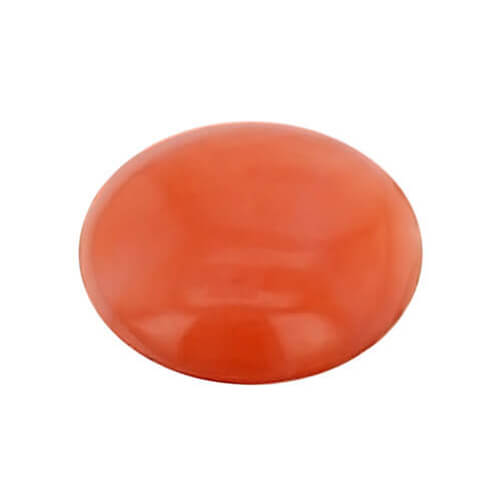-
About Coral
Coral is formed by living organisms, like pearls. Coral polyps grow in tropical and subtropical ocean waters, forming branching, antler-like structures. When the polyps die they leave hardened limestone skeletal remains and this material is used as a gemstone. It has been harvested for decorative use since ancient times.
-
Spiritual & Health Benefits
Coral had been used throughout history to protect from danger and evil spirits.
Ancient Egyptians believed coral contained a drop of divine blood and used it to protect their tombs.
The Gauls decorated their helmets and weapons with coral and similarly Roman children wore coral pieces around their necks for protection.
In the early 20th century, Italians used coral for protection from the “evil eye” and from infertility.
-
Gem Characteristics
Most coral is white, but the type that is most used in jewellery, known as “Precious Coral” is the hard core or internal skeleton that can take a high polish. It occurs mainly as warm orange to reddish pink colours from pale pink to deep red In fact, the colour known as coral is derived from this gem material. Dark brown to black precious coral grows predominantly in Hawaii. Coral gemstones can be all one solid uniform colour or display zones or swirls of pale to darker tones. The more uniform colours are considered more valuable.
Coral is is naturally matte, but can be polished to a glassy shine. Coral gemstones can be either solid or porous, depending on the polyp formation. Coral is mainly made into cabochons and beads, plain domed or carved in floral patterns. It is occasionally confused with Carnelian which is much harder.
-
Care
Coral is very soft and brittle and does not make a durable gemstone. It is prone to both scratches and chipping and should be treated with great care. Coral can be cleaned with a soft, clean cloth, and then rinsed in warm, soapy water. As some forms of coral are porous it should never be soaked, or put in an ultrasonic cleaner, or dipped in a proprietary jewellery dip.
Coral jewellery should only be put on after the person has applied their perfume and make-up. Common chemicals can cause lasting damage. You should not only remove coral rings before you use bleach, or use hair dye but ensure you wash your hands thoroughly before you put your ring back on your finger. Coral jewellery should not be worn when swimming, exercising, washing dishes or any household cleaning, or when cooking with vinegar.
Coral should be stored separately from other jewellery to reduce scratching. It can be kept in a soft pouch or wrapped in tissue.

Coral
Coral is the gem for the 35th wedding anniversary.
Coral is believed to be one of the oldest forms of gemstone jewellery, having been found in ancient Egyptian and prehistoric European Burials. Some pieces have been dated as far back as 23,000BC. Red Coral has been highly regarded since early civilizations for its colour, lustre and texture. It was especially popular during the Victorian age.
Coral grows in the Red Sea, the Midway Islands, the Canary Islands, the Taiwan and Malaysian Coast, the coast of Australia (the Great Barrier Reef), Italy, (Sardinia), and Hawaii.

